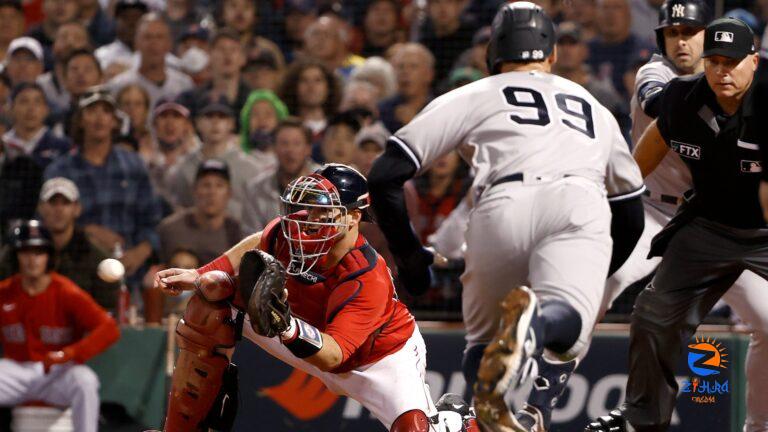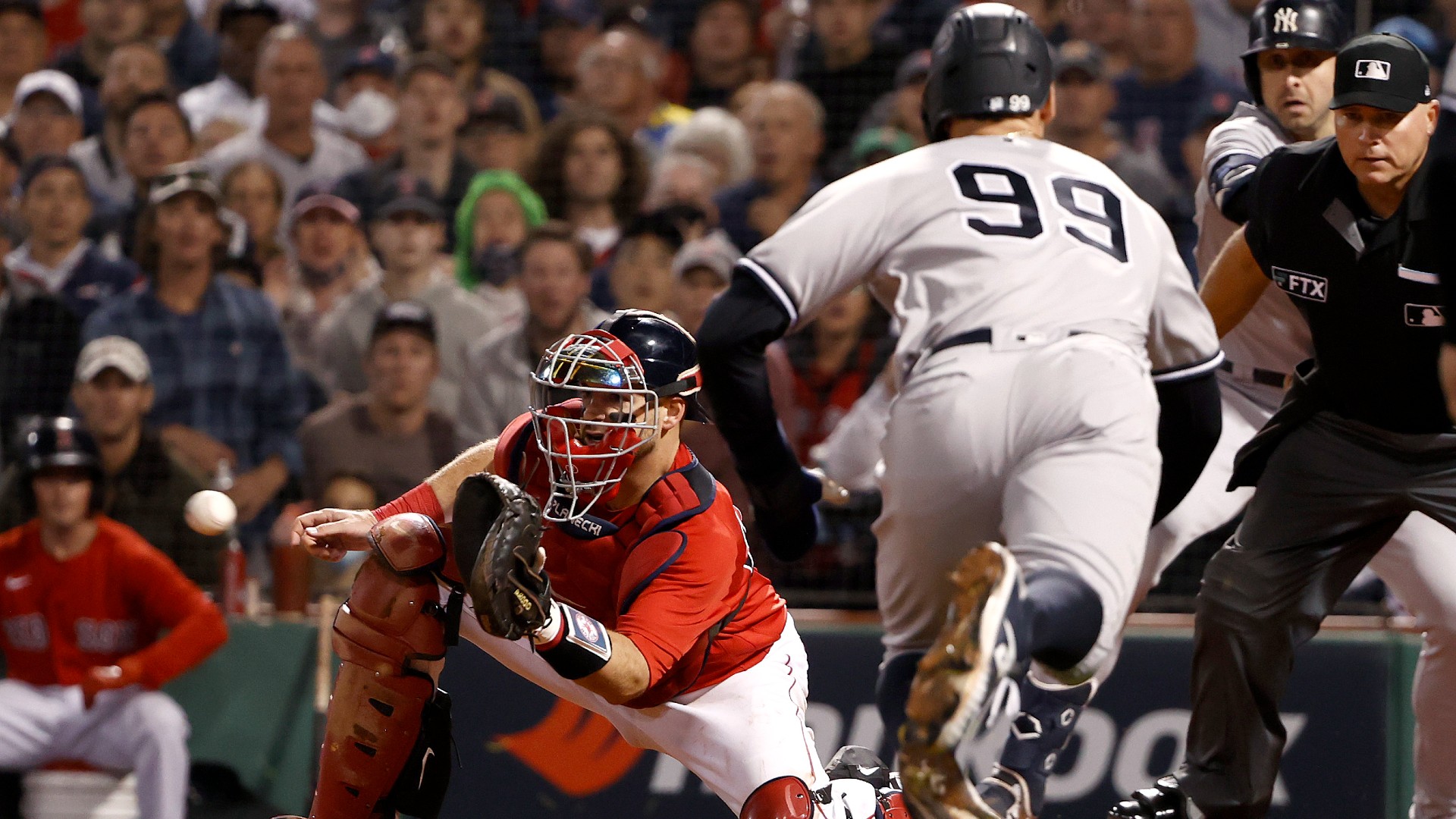
[ad_1]

In perhaps the biggest turning point of the game, Yankees’ third base coach Phil Nevin decided to send Aaron Judge to home plate.
The Yankees were finally on the board in the top of the sixth inning, and when Giancarlo Stanton lined a towering shot off the Green Monster in left center, Nevin was ready to send Judge home all the way from first. The call backfired as Judge was thrown out easily, and Stanton had to settle for second base with two away and no run scored. Joey Gallo popped out in the next at-bat to end the inning.
RIVERA: Where do Yankees go from here? Offseason highlighted by 5 questions
After the game, Yankees manager Aaron Boone explained that his third base coach simply misread the throw coming in from the outfield.
“I think coming in, the ball coming in looked like it was going to be kind of an in-between hop to the infielder,” Boone said in his postgame news conference. “Bogaerts did a good job of creating a hop, catching it clean and and obviously throwing home and getting him. And that kind of squashed the potential rally there so I think what saw was what he thought was going to be kind of an in-between hop and really a tough chance.”
On the throw in, Bogaerts did appear to have to reset himself and take a step in to field the ball, but he still caught it in a position to quickly turn and fire. He had no trouble throwing a strike to Kevin Plawecki at the plate, who slapped the tag down on Judge for the out.
And there was some uncertainty on whether Nevin would even send the 6-7, 282-pound right fielder. Judge was nearly to third base when Nevin finally began to wave his hands and send Judge to try and score.
Stanton agreed with the decision to try and score Judge, saying they had to take the chance.
MORE: Why did the Yankees pull Gerrit Cole after two innings?
It was a questionable call on several accounts for the Yankees to send him in that situation, even if the throw didn’t come in cleanly. For starters, Baseball Savant lists Judge’s sprint speed as 27.5 feet per second, which isn’t slow by any means but, at the 62nd percentile, it also does not make him a burner.
The math also doesn’t support being aggressive in that type of situation. According to Baseball Prospectus’ 2019 run expectancy matrix (the most recent year with data), teams could expect to gain 1.22 runs with one out and runners on first and third, which assumes Stanton stays at first and doesn’t advance on Bogaerts’ throw to the plate. Conversely, the run expectancy of a runner on second and two outs is 0.34.
Let’s say Bogaerts’ throw was inaccurate and Judge scores to make it a 3-2 game. A runner on second with one out still has just an expected run scored of 0.71, which doesn’t exactly guarantee the Yankees tie it up.
MORE: Yankees broadcaster hilariously botches Giancarlo Stanton non-home run call
Of course, Nevin didn’t have a mental calculator in his head, nor does he likely have those numbers memorized. And there was no guarantee that Gallo or Torres were going to drive in the runners.
But the result was what it was: a momentum-killing play that fueled the Red Sox and put them an out away from escaping the inning. New York wouldn’t put another runner on base until the ninth inning, when Stanton homered to right, making it a 6-2 game two outs before the Yankees’ 2021 campaign came to a close.
[ad_2]